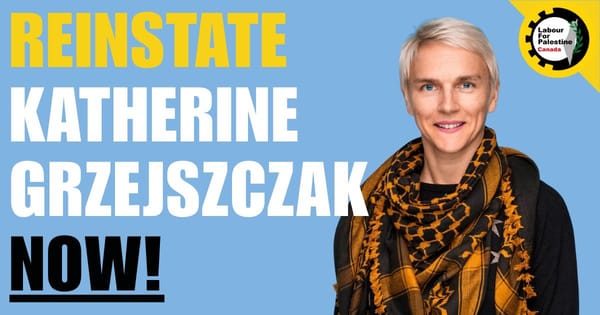
Last week, the federal Liberal government announced its 2021-22 budget, which outlines $101.4 billion in new spending over the next several years to stimulate the post-pandemic economy.
With COVID-19 still raging across the country — and the pandemic’s social and economic impacts all the more clear — it was unlikely that we’d see a return to austerity (at least not this early). But while the new spending commitments are welcome, this is very much a typical Liberal budget.
Spending
When it comes to overall spending, the budget is largely front-loaded. Despite immediate public spending increases in the next couple of years to spur post-pandemic growth, federal spending as a percentage of GDP will be only marginally higher by 2025-26 than before the pandemic.The ideology of small government is far from dead outside the exigencies of COVID-19.
On the labour front, the Liberals have committed to creating 1 million new jobs nationwide. There’s no doubt that without the spending undertaken since last spring — and without further fiscal commitments — the labour market would currently be in much worse shape. Yet how the government proposes to arrive at this new promised job creation is telling.
Much of the spending involves providing various employer incentives. The government will extend the Canada Emergency Wage Subsidy (CEWS), which, although it kept many workers employed at the height of the pandemic, lacked strict qualifying criteria and provided funds to large corporations who were openly flush with cash. The NDP and the labour movement both failed to push for more employer sacrifice in the design of this program, and instead allowed a good deal of profitable corporations’ wage bills to be socialized at public expense.
In typical Liberal Party fashion, the government is characterizing much of its economic stimulus spending as “small and medium-sized business” support. For example, the new budget earmarks funds for the creation of a Canada Recovery Hiring Program, which will allow eligible employers to receive subsidies for expenses related to hiring new staff or increasing wages and hours during re-opening.
Relatedly, Budget 2021 will expand and loosen eligibility criteria for the Canada Small Business Financing Program, with proposed annual funding of $560 million. The Liberals also promise to “strengthen capacity within the entrepreneurship ecosystem” (whatever that means) through various financing support directed specifically at women who own small businesses. All this small business targeting is despite their, on average, much poorer labour standards.
Worker Supports
In general, the support for workers takes one of two forms: a subsidy for employers that will ostensibly trickle down to labour or aid via several training, apprenticeship, and internship programs. There appears to be very little in the budget that will directly redound to the benefit of the working class, outside of raising the federal minimum wage to $15 per hour (though only about 1 million people work in the federal jurisdiction, approximately 42,000 of whom earn the minimum wage).
In terms of income support programs, the temporary changes which made Employment Insurance (EI) less restrictive during the pandemic, as well as the support provided through the Canada Recovery Benefit (successor to the CERB), appear to have autumn expiry dates. Despite promises for later consultations concerning reforming EI, the Liberals appear committed to reverting to an austere system of unemployment compensation.
Climate
Although the budget also dedicates new spending to climate related concerns, there’s not much by way of a noticeable move away from the Justin Trudeau Liberals’ commitment to resource extraction (this is the government that not so long ago spent $4.5 billion on a pipeline). Along with spending allotted for green housing retrofits, there’s a strong emphasis on taxes, tax credits and incentives. Again, as with other line items in the budget, the Liberals remain committed to various subsidy and pricing mechanisms (i.e. carbon pricing), in lieu of major commitments to direct public investment in a green industrial policy and jobs plan on the order of a Green New Deal.
Pharmacare And Elder Care
A glaring omission is that the budget offers no new pharmacare program, something many expected after the pandemic spurred conversations about the inaccessibility of many pharmaceutical drugs. Liberals promised pharmacare in 2019 and failed to deliver, and then voted down a recent NDP private member’s bill to establish a framework for national drug coverage. The current government apparently remains committed to a system which ties prescription drug coverage, as well as dental and optical care, to employment, even after the pandemic exposed how disastrous this can be for those who lose their jobs (not to mention the growing numbers of workers who lack access to employer-provided benefits.)
The budget also provides just $3 billion over five years in elder care spending. This is particularly troubling after the pandemic wreaked havoc on underfunded and privatized long-term care facilities and their overworked and underpaid labour force. There’s a long fight ahead to bring elder care within the public health insurance system and to ensure adequate funding and care for Canada’s aged.
Taxes
Amid the growing inequality of the pandemic, the budget misses a political opportunity to raise new revenues by taxing the wealthiest. By all indications, the Liberals remain opposed to wealth taxes or increasing tax rates on passive investment incomes. What they do plan — new luxury taxes on expensive cars, yachts and private planes — looks more like posturing than actual revenue generating devices. At a time when increasing taxes on the wealthiest is very popular, these luxury taxes appear calculated for inclusion in witty by-lines — not as a genuine progressive reorientation to tax policy. The government says it will work to close tax loopholes and crack down on evasion, but how strong their commitment to this is remains to be seen.
Childcare
Perhaps the most remarkable budget item is the commitment to spend $30 billion over the next five years on a Canada-wide early learning and child care system. The plan entails reducing child care costs by 50 per cent on average by next year, and reaching a $10 per day average by 2026 everywhere outside of Quebec.
This is a welcome and long-overdue proposal to finally address the care crisis in Canada, which sees working-class families struggling to access affordable and quality child care. Additionally, moving toward establishing a nationwide child care infrastructure needs to be a top priority in addressing the disproportionate impacts of the pandemic on working women.
However, there are a couple of points that need to be made about the Liberal’s new proposed child care program.
First, Liberal governments have been promising to implement a national child care program for decades and have never delivered. Their new plan commits to providing half of the necessary funding, requiring negotiation and buy-in from the provinces to make up the remainder. With six conservative-run provincial governments, this leaves the prospect of national child care in a precarious situation.
Second, the Liberal child care plan would target funding to nonprofits and create federal standards for child care spaces. However, the proposal doesn’t create a fully integrated child care system, where early years care is linked to and funded similarly to K-12 public school (a much better model).
The Liberal’s decentralized child care funding plan will need to address how equitable access will be guaranteed and program standards will be enforced across regionally diverse areas of the country. Furthermore, the present plan remains silent on the conditions of, and compensation for, the labour performed in these spaces.
Early childhood educators (ECE) — 96 per cent of whom are women — are among the most undervalued and undercompensated workers in the care economy. Approximately 95.5 per cent of ECEs earn below the average provincial wage, and rates of unionization are very low outside of public sector institutions, such as on-site daycares in universities or other government agencies. A child care plan that doesn’t raise the pay and standards of those providing the service can’t reasonably be characterized as a win for gender equality.
The 2021 budget isn’t the return to austerity that many feared in the wake of the sizable spending necessitated by COVID-19 last spring and summer. For that we can at least breathe a sigh of relief. However, the budget also doesn’t mark the ‘return of big government.’ This budget is the product of a Liberal minority government still dealing with a poorly handled and economically devastating public health crisis. It contains some good measures that will make life marginally better for some Canadian workers. But there’s also plenty to criticize and much political space to fight for something better.






